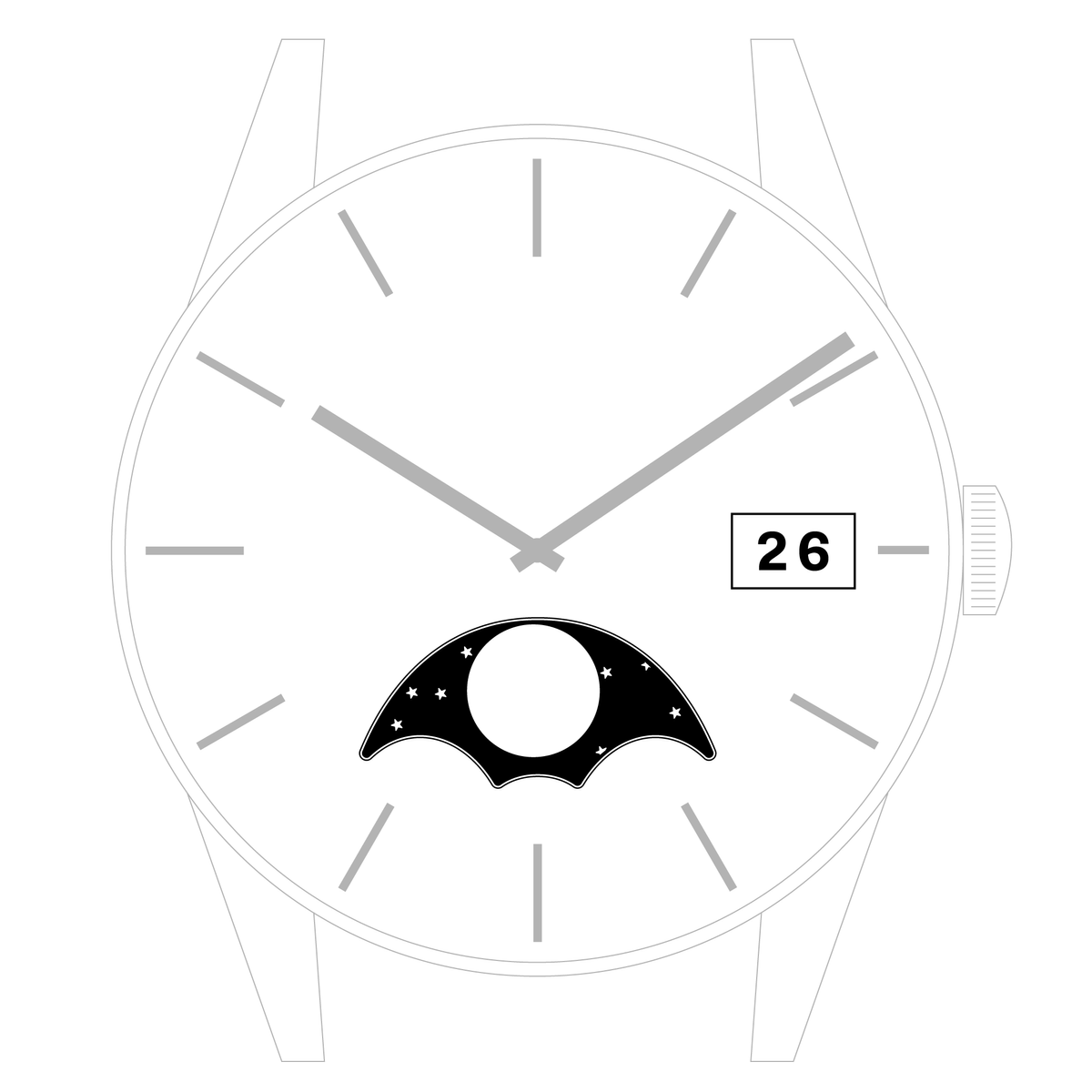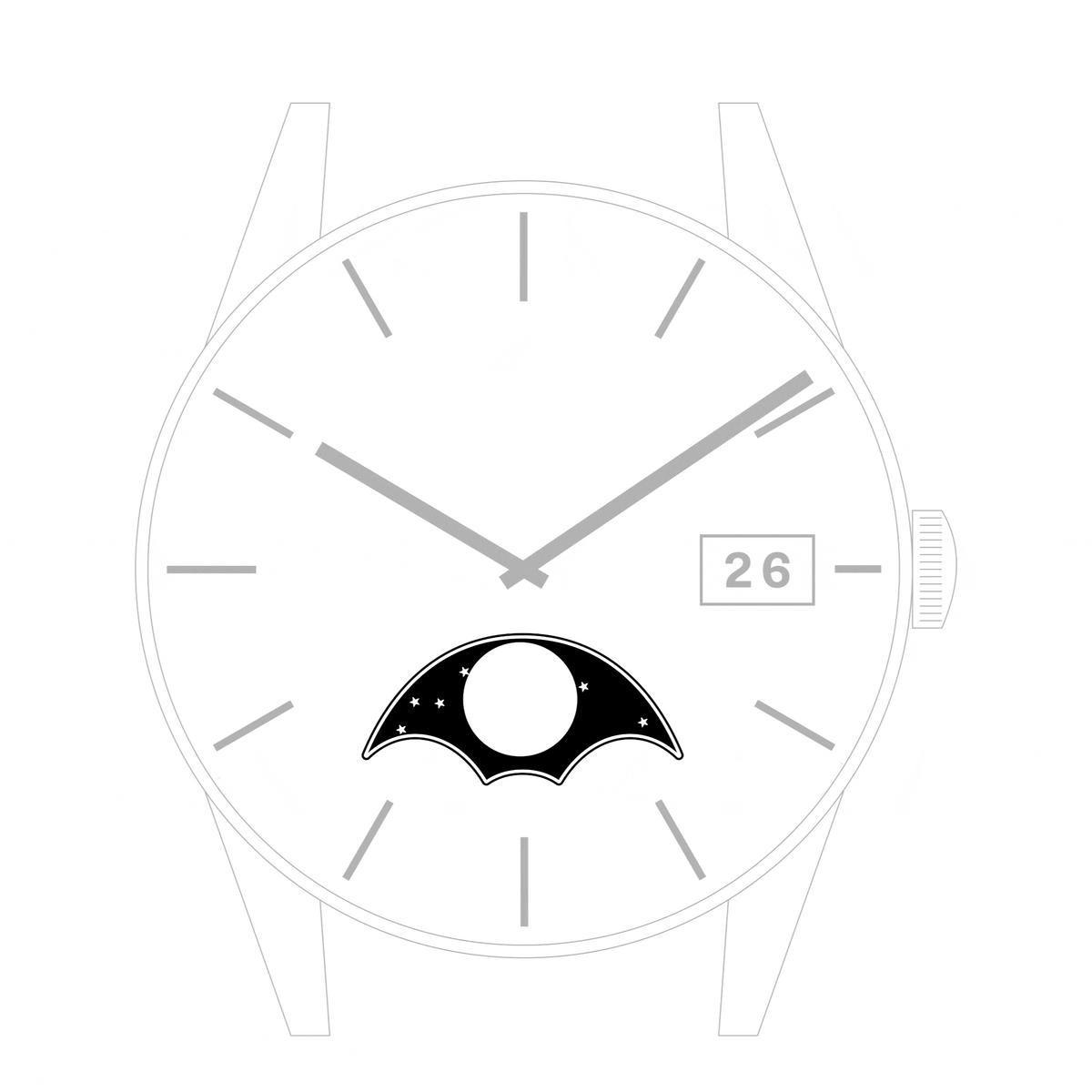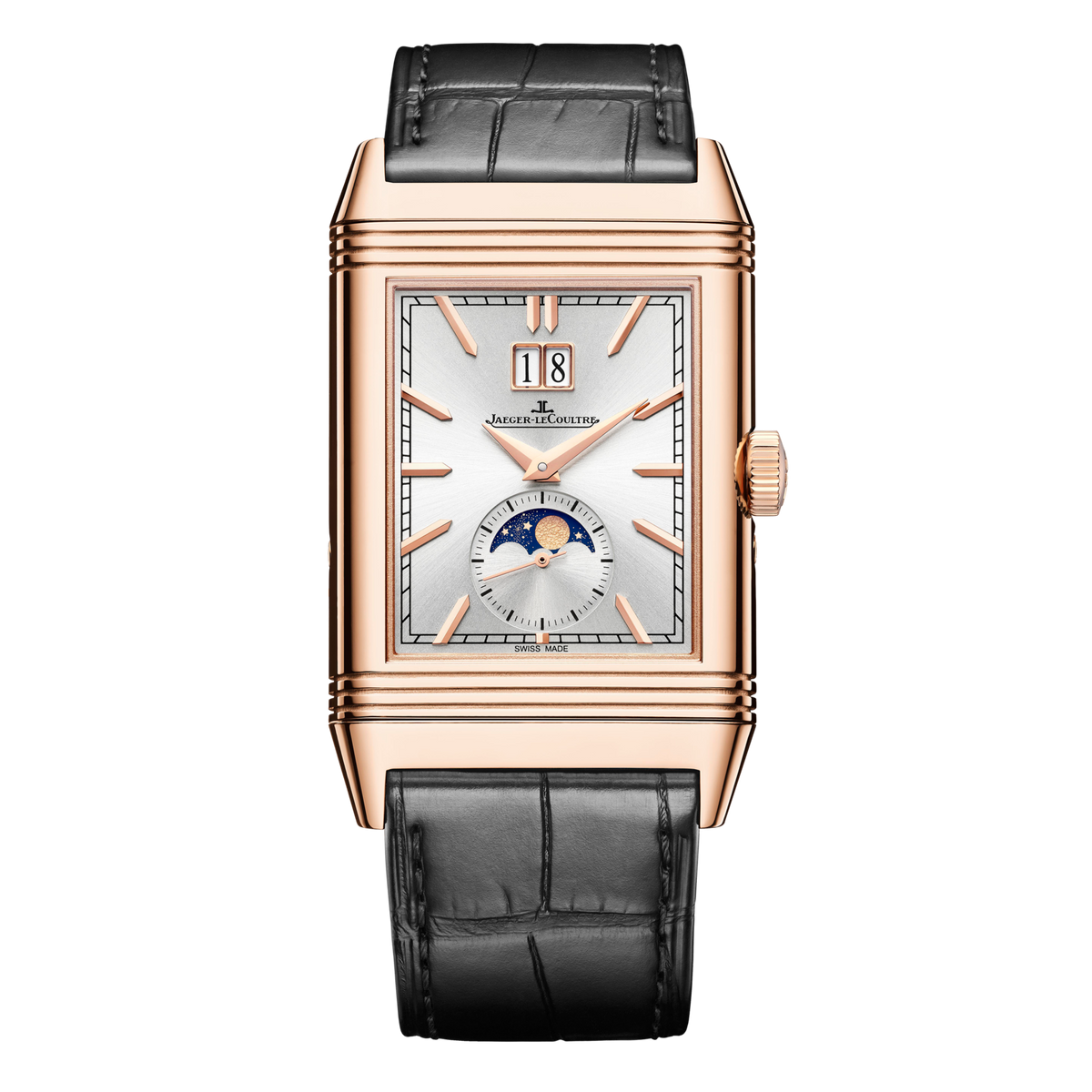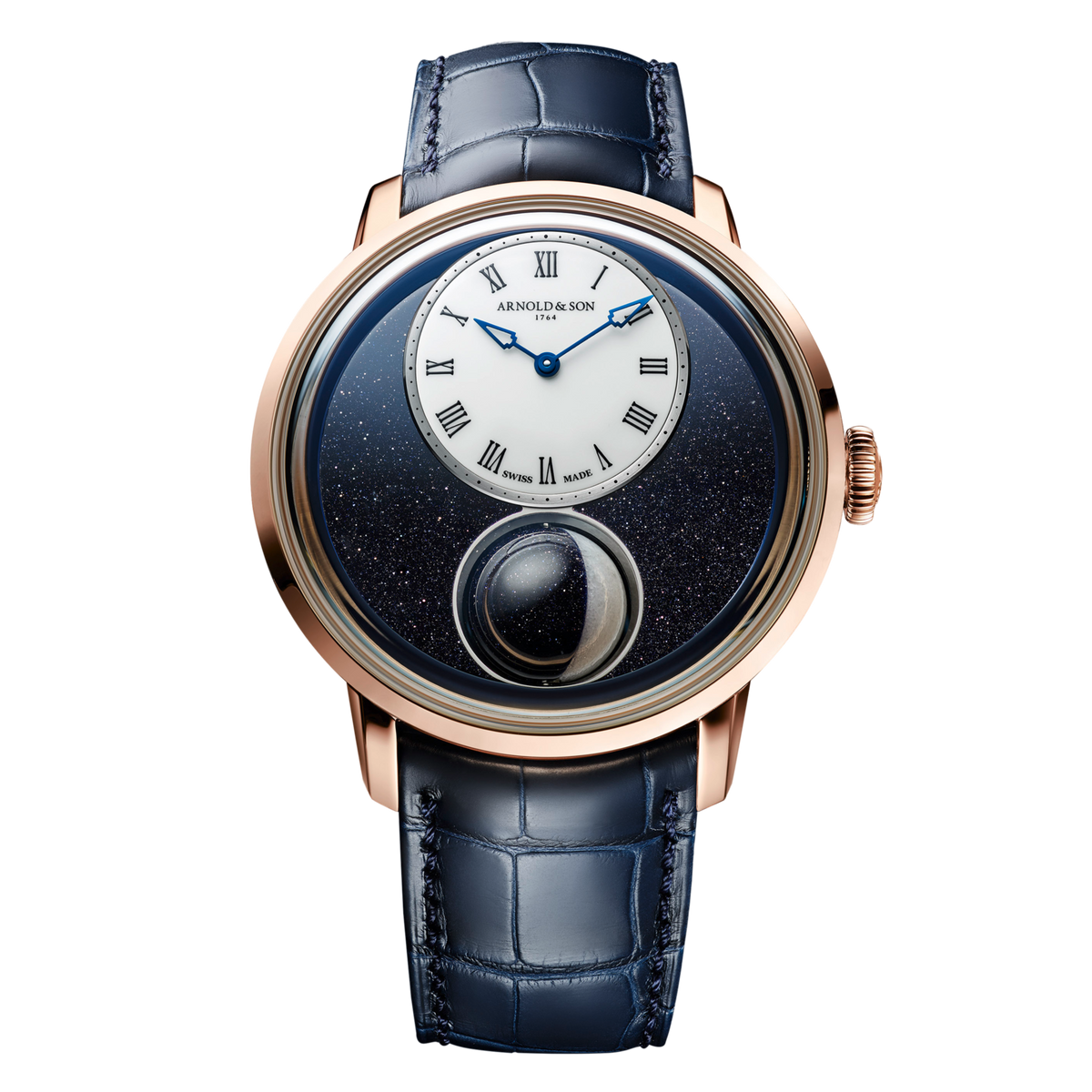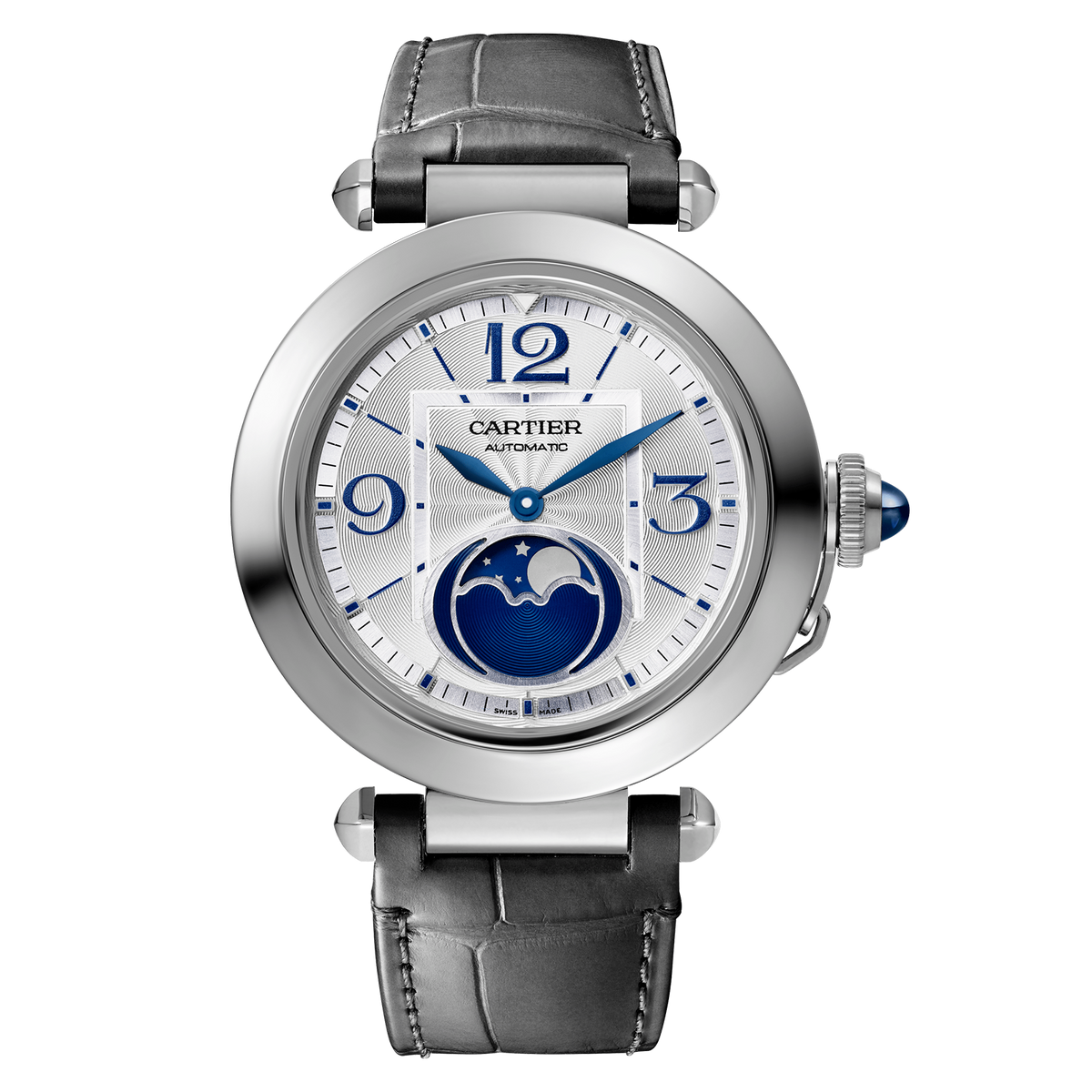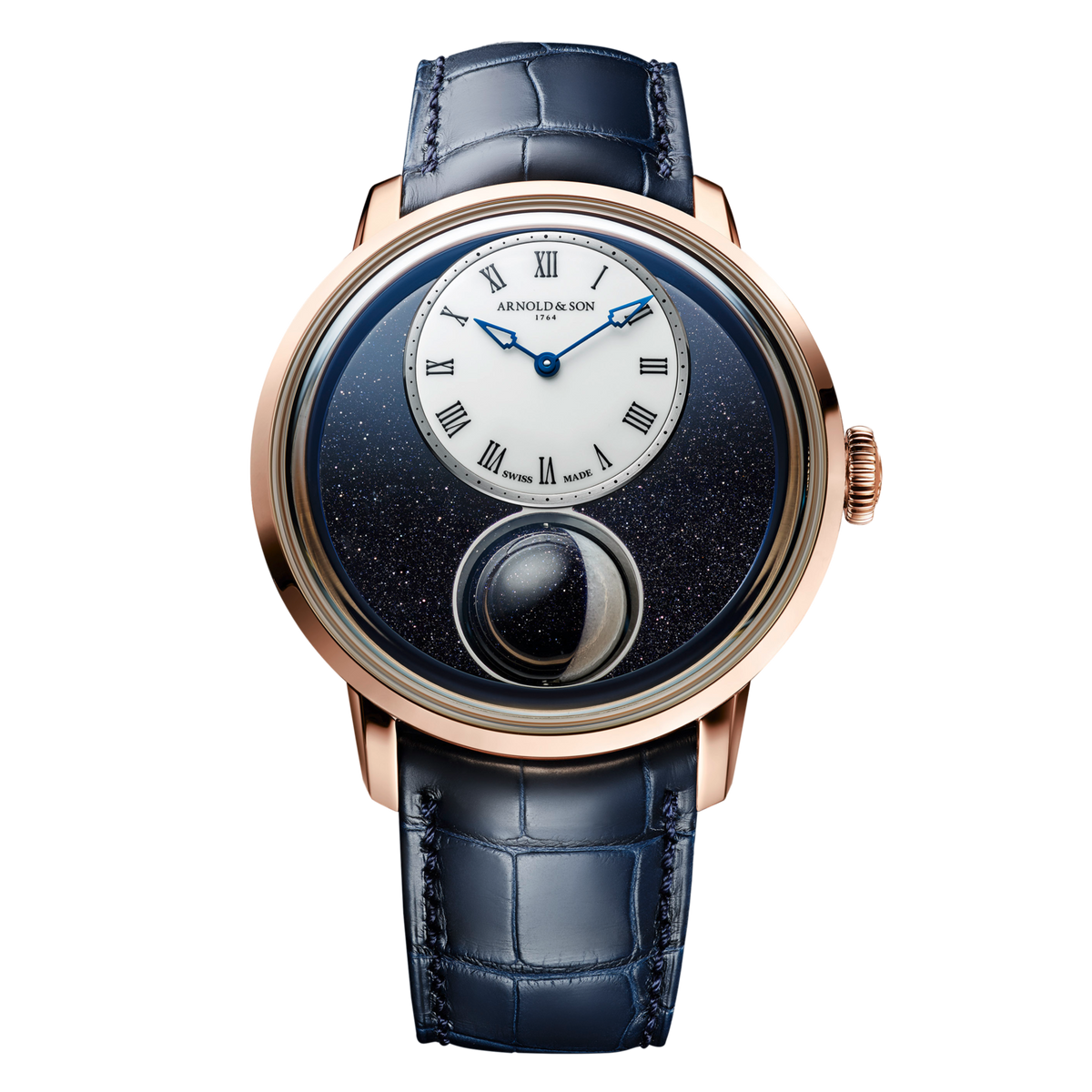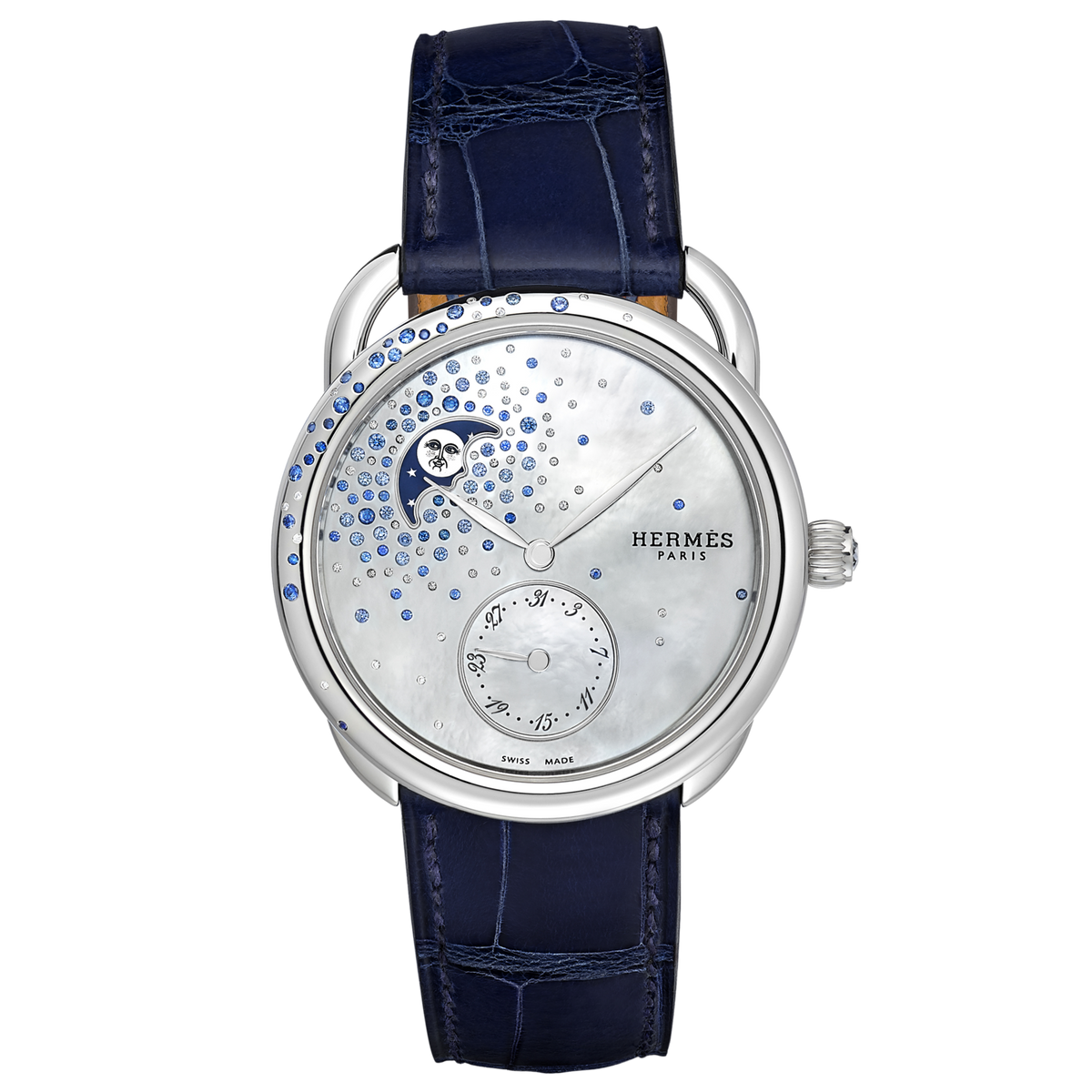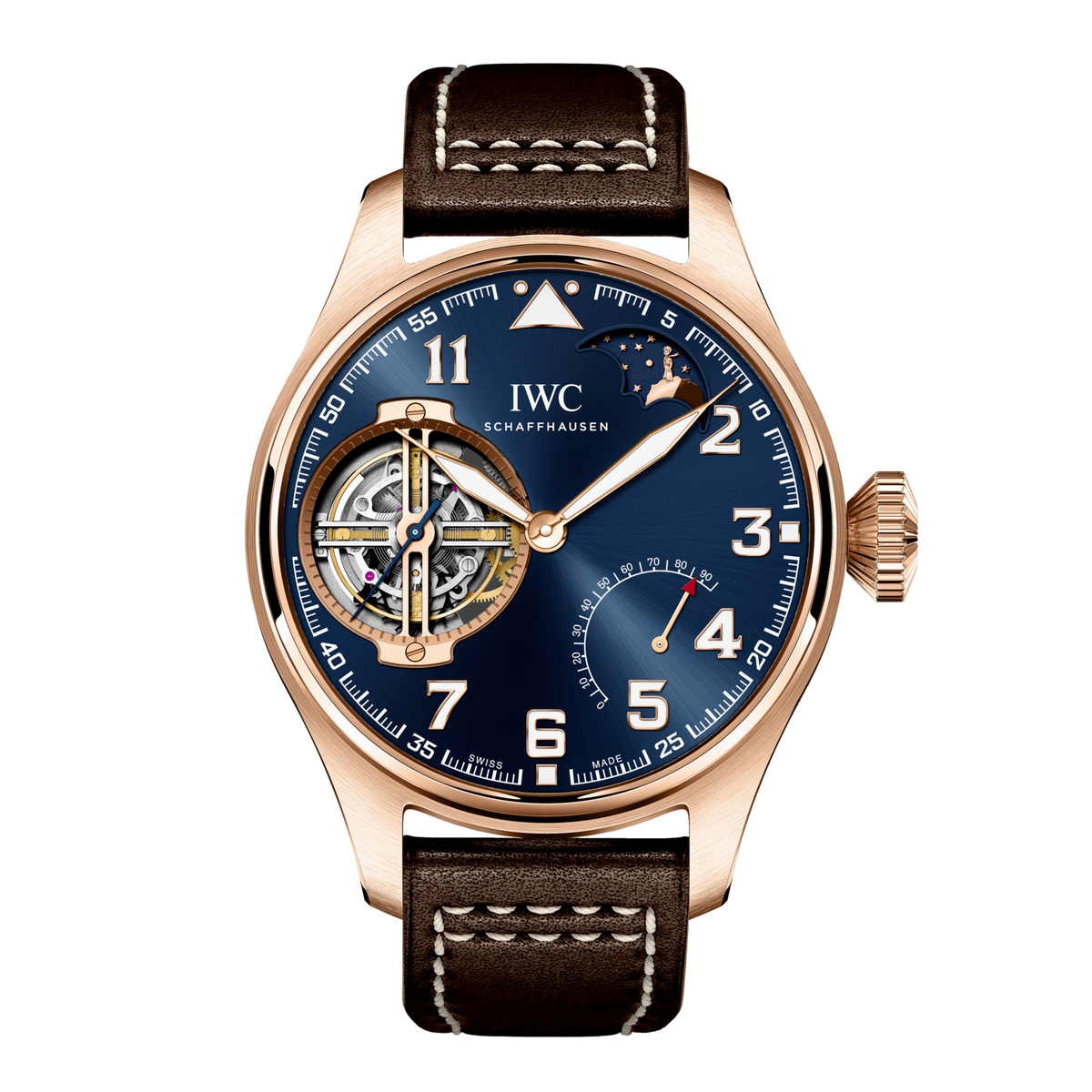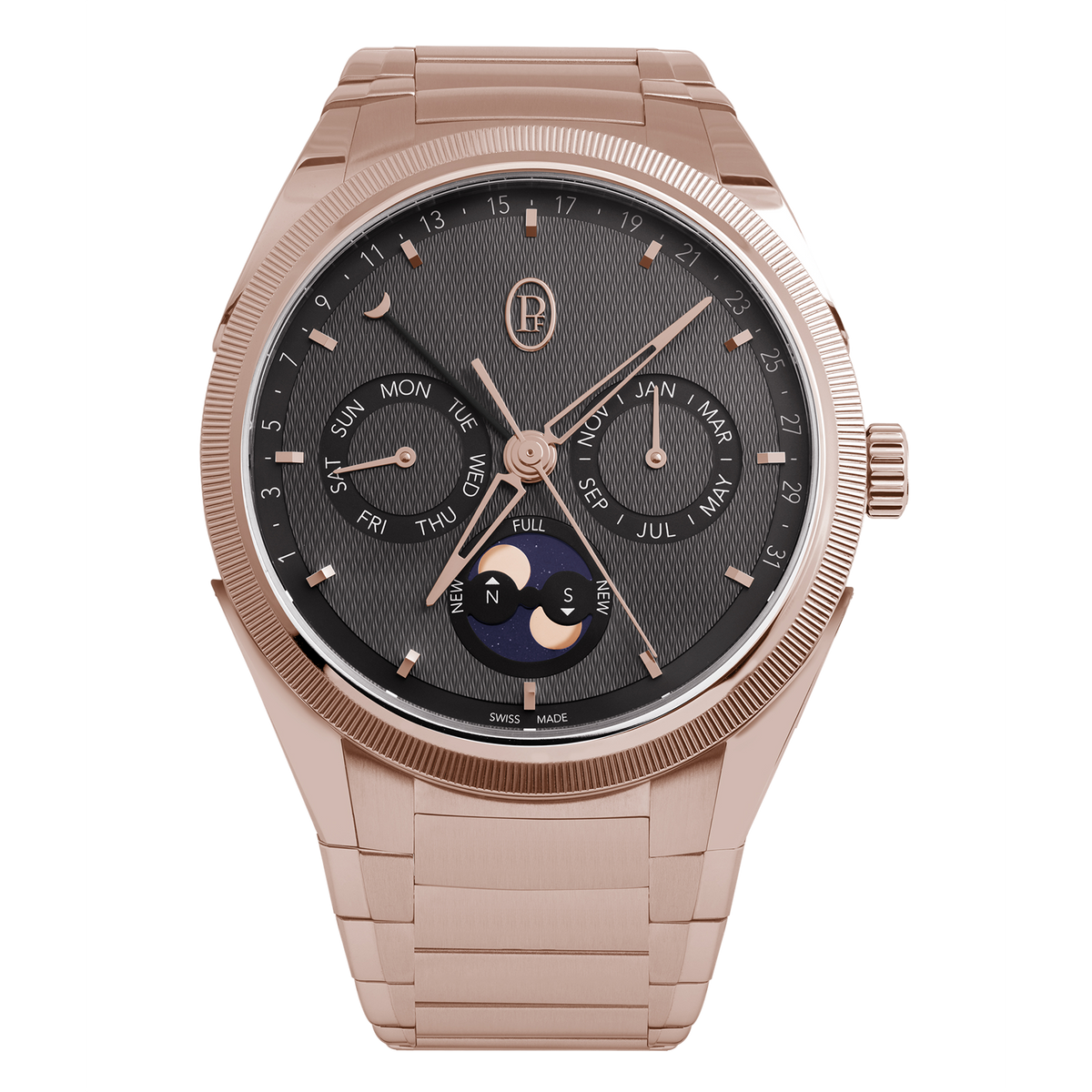Progressively and thanks to the translation of Arabic texts into Latin, this knowledge – particularly in the field of astronomy – made its way to Europe. Buoyed by renewed economic momentum, Western medieval civilization showed great enthusiasm for progress and mechanization. The late 13th century saw the appearance of clocks with gear trains, driving weights and regulators.
It was not long afterwards that the indications provided by astrological water clocks began to be reproduced on monumental clocks. The oldest is possibly the one made by Richard of Wallingford, Abbot of St. Albans, for his abbey located to the north of London. Work began on it in 1327 and, once complete, it indicated the positions of the fixed stars, the Sun and the Moon – complete with its phases, age and the line of nodes involved in eclipses – as well as the ebb and flow of the tide at London Bridge
In step with horological progress, the moon-phase indication migrated to a weight-driven wall clock, the spring-driven table clock and then, at the Renaissance, the pocket watch. Too inaccurate to show the minutes, the latter tended to display the hours, the date, the days, the months and often the phases and age of the Moon, as well as Zodiac signs. Much in favor in both Europe and the Near East towards the late 17th century, this display was mainly intended for devotees of astronomy and astrology.
By the 20th century, this complication had become essentially a romantic feature. The first wristwatches equipped with a moon-phase indication appeared in the 1920s. Generally accompanying a complete calendar, it became the specialty of brands such as Patek Philippe, Record Watch and Angelus. For many years, the function evolved very little, before once again sparking watchmakers’ interest in 1980, with the work of Kurt Klaus. The head watchmaker at IWC Schaffhausen became the first to make an astronomical moon phase for a wristwatch. Years later, in 2009, Ulysse Nardin launched the Moonstruck. Developed by Ludwig Oechslin, this model reproduces the Moon’s rotation and the visible path of the Sun in the sky as the Earth revolves around it. Moon phases are represented by two superimposed, slowly rotating disks.
That same year, De Bethune became the first Maison to offer a spherical moon. The Digital model made a lasting impression and inspired a number of other creative talents, such as Konstantin Chaykin, a Russian member of the AHCI, who developed a black hood for his Lunokhod that progressively covered the three-dimensional depiction of the Moon. Finally, the most recent milestone development is the above-mentioned Sauterelle Perpetual Moon model presented by Andreas Strehler in 2014.
